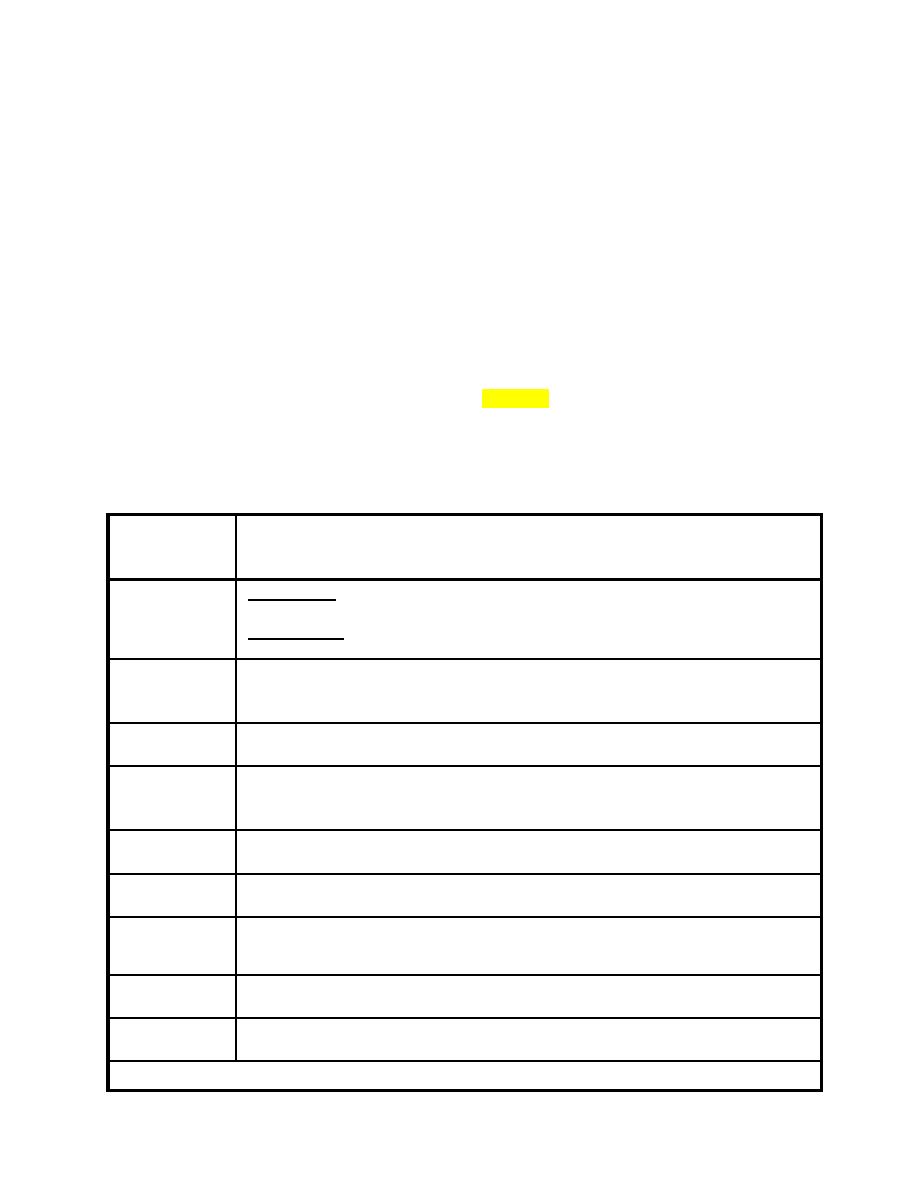
CEMP-E
TI 850-02
AFMAN 32-1125(I)
1 MARCH 2000
c. Recommended New Rail Sections.
(1) Weights and sections recommended for new rail purchases are: 115RE, 132RE, 133RE, and
136RE, with 115RE being the preferred. These are the standard sections recommended by the AREMA
and should be available for many years.
(2) Rail may be purchased in either 39- or 80-ft lengths. Rail 80 ft long has the advantage of
reducing the number of joints to half that for 39 ft rail. For small purchases where the rail may be
transported by truck, 39 ft lengths may be more cost effective.
d. Relay (Secondhand) Rail.
(1) Secondhand rail that meets the specifications in table 6-10 either as is or after cropping off the
ends, may be used for rehabilitation or new construction. Before selecting relay rail, the cost, condition,
and availability of matching joint bars and tie plates must be investigated.
Table 6-10. Dimension and Surface Specifications for Relay (Secondhand) Rail
Length
For Standard 39 ft lengths:
Not more than 10% of lot between 33 ft and 39 ft.
No rail shorter than 33 ft.
Vertical
90 lb or Larger: Average top wear 5/16 in. or less with maximum at any one location of 11/32
in.
Wear
Less Than 90 lb: Average top wear 1/4 in. or less with maximum at anyone location of 9/32
in.
Side
At least one side must meet the following:
Wear
90 lb or Larger - Maximum of 5/16 in
Less Than 90 lb - Maximum of 1/4 in.
Lip or
Maximum of 1/16 in., either as is or obtained by grinding off excess.
Overflow
Engine
Maximum of 1/2 in. diameter (or 1/4 in. wide by 1/2 in. long) and 1/32 in. deep.
Burns
Maximum of four engine burns per rail.
Engine burns on no more than 8% of the lot.
End Batter
Maximum of 1/8 in. when measured 1/2 in. from the rail end with an 18 in. straightedge.
And Chipping
Running Surface
Maximum size of 1/4 in. wide by 1/2 in. long and 1/32 in. deep.
Damage
Maximum of four damaged spots in any one rail.
Defects Not
Bolt hole cracks or breaks, broken base, crushed head, detail or engine burn fractures, head-
web or web-base separations, piping, horizontal or vertical split head or web, torch cuts or
Permitted
flame gouges, compound or transverse fissures, deep pitting from corrosion.
Condition and
Rail must be: free from obvious defects; clean in appearance; straight in line and surface and
without kinks; and free from base defects such as plate wear and spike notches.
Appearance
Internal
Rail to be ultrasonically inspected before or after installation.
Inspection
Defective sections to be rejected and replaced.
Note: See AREMA Manual chapter 4, part 3 for rail defect definitions and illustrations.
6-33



 Previous Page
Previous Page
